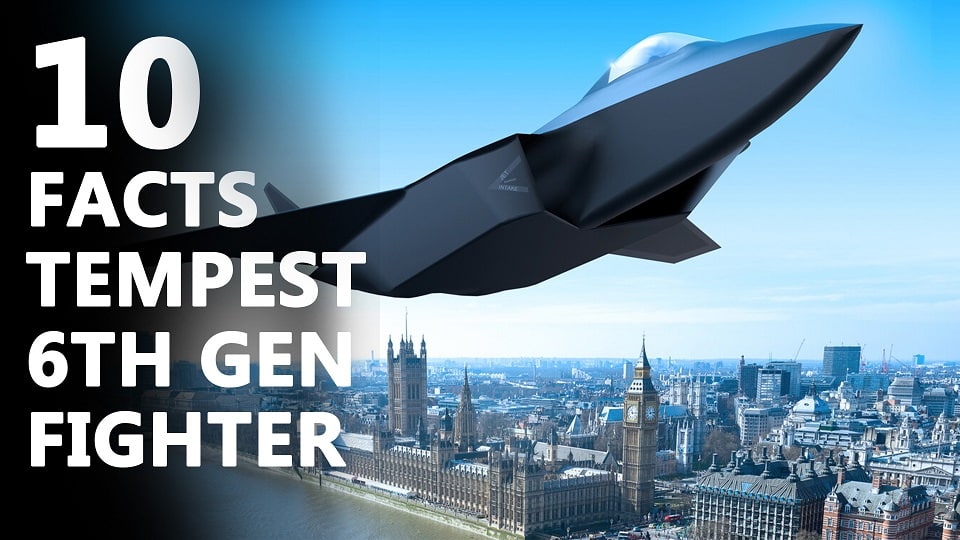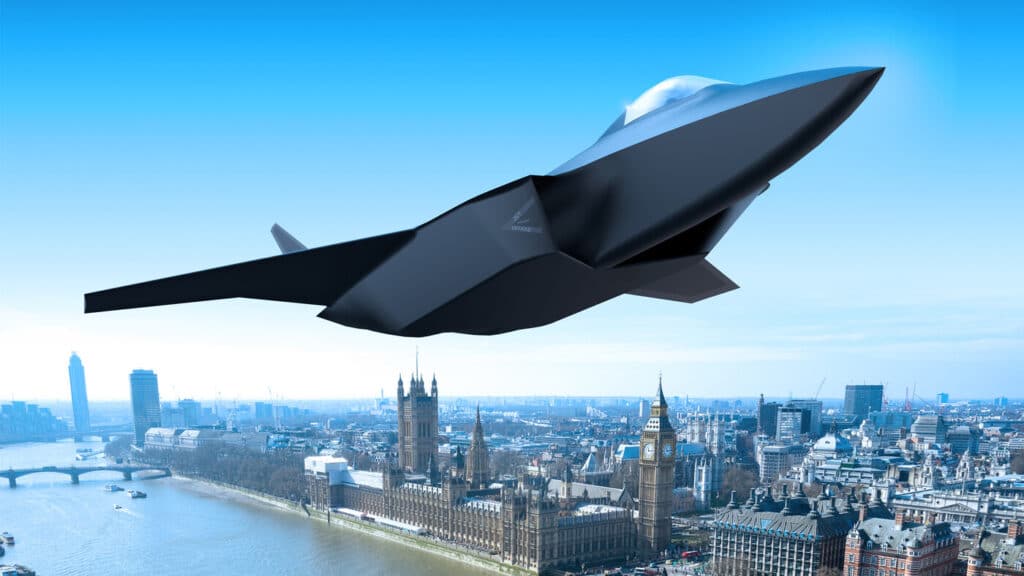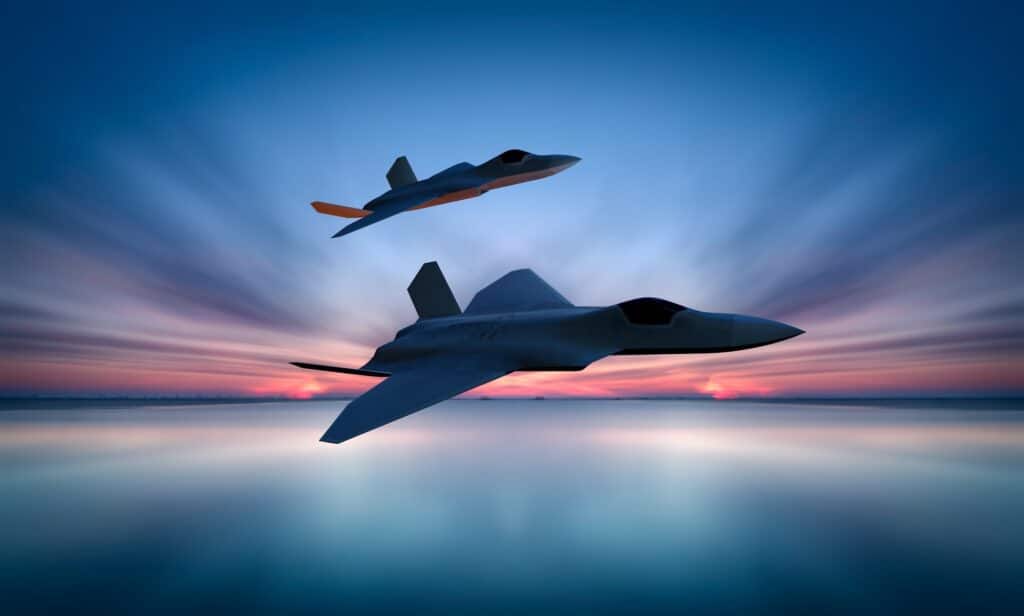Aerospace
10 Facts about the Tempest 6th gen fighter jet.

we’ll look at 10 fascinating facts about the sixth-generation fighter plane that the UK, Japan, and Italy are working to develop.
1. UK, Italy, and Japan announced a sixth-generation fighter.
The UK has revealed plans to produce the 6th Generation fighter jet in cooperation with Japan and Italy with a shared ambition to develop a next-generation fighter aircraft as part of a new Global Combat Air Programme (GCAP). It is a more lethal combat jet now that the UK and Japan have finished developing cutting-edge technology.
Meet Japan’s 6th Gen Fighter jet and its mind blowing features(Opens in a new browser tab)
2. The UK has a number of superpower corporations, including RR, MBDA, and BAE.
The program is being developed closely in conjunction with the BAE System, which offers an electronic system, the MBDA, which offers next-generation armaments, and Rolls-Royce, which is producing the aircraft’s engines. A number of next-generation future combat air system capabilities are currently being evaluated and developed by the UK under the Tempest program, which is already in the development phase of the 6th generation fighter jet.
UK industry to play key role in new Global Combat Air Programme(Opens in a new browser tab)
3. Fighter aircraft with a loyal wingman.
Global Combat Air Program This aircraft will operate under the crew and uncrewed system that can be operated under the closed network group, just like every other sixth-generation fighter. “Loyal Wingman” platforms will be a part of a micro air group in a system of systems strategy.
4. The key technology birth is GCAP vs. FCAS.
The FCAS program is being created by the Airbus team with assistance from France, Germany, and Sweden, as the European Union declared, in order to compete with the GCAP program, which is being developed under the guidance of the United Kingdom. Although the two fighter jets will share certain similarities, they will have different qualities. The UK will profit financially from this investment in aircraft development and pick up new capabilities for building planes.
5. The best technology for fighter jets will be brought in large part by Japan.
Japan has already developed and built a number of demonstration aircraft. The first experimental Stealth technology demonstration for the sixth generation of aircraft is the Mitsubishi Heavy Industries-built X2. This aircraft is used to learn stealth technology and prototypes. The X-2 successfully completed its first flight on April 22, 2016, flying from Nagoya Airfield to the JASDF’s Gifu Air Field.
6. For this fighter, Japan is introducing 3D vector thrust technology.
This aircraft’s engine nozzle, which includes 3D thrust vectoring similar to the system used on the Rockwell X31, is being added by Japan. This allows for quick aircraft movement and supports a variety of flight trajectories. Additionally, thanks to the display of fly-by optics, a capability unique to this aircraft, the data are processed 100 times faster than with wires. Due to its immunity to electromagnetic interference, it has benefited.
7. This aircraft has an automatic repair flight control system.
Additionally, Japan adding This aircraft also has the capacity to repair its own flight controls, enabling it to detect flaws or damage to its flight control surface on its own. maintain, adjust, and carry out controlled flight. It will have a radar system that is comparable to the F 35’s. Japan has conducted research on the airframe construction of its aircraft, eliminating fasteners and replacing them with solid adhesive bonding. Additionally, its surface will have a special covering that can lessen radar reflection.
8. Incoming missiles are deflected by microwave weaponry.
A microwave weapon will also be placed on the F-X by Japan in order to deflect incoming missiles. This aircraft has a drone control system that interacts with the Boeing wingman drone control system. When compared to using drones, which can be fired from an aircraft’s weapons bay to reach and target the enemy at a great distance, this will be a breakthrough in operating a greater range.
9. The initiative will enable the UK to create 21,000 employees in ten years.
How the UK benefited from the initiative. It will gain knowledge of the creation of airplanes as well as rights to patents on the technology, which may potentially lead to the development of other products. It will also create 21,000 jobs in the next 10 years and strengthen the economic reform of exporting such goods. As part of the agreement, the bulk of aircraft will be developed in the United Kingdom.
10. Tempest will replace their fighter in the UK, Japan, and Italy.
The addition of Japan will also increase economies of scale, as its own F-X sixth-generation fighter program was intended to replace about 90 F-2 planes starting in the mid-2030s. With the potential for up to 100 aircraft, the UK has long been aiming to replace its Eurofighter Typhoon FGR4 platform with what is now the GCAP starting in the middle of the 2030s. The GCAP will also take the place of Italy’s Eurofighters.

Aerospace
Boeing Transfers Rocket Stage to NASA, Paving Way for Human Moon Mission

Boeing has achieved a significant milestone by providing NASA with the second core stage of the Space Launch System (SLS) rocket.
This crucial component, crafted at NASA’s Michoud Assembly Facility (MAF), is set to propel the Artemis II crew into lunar orbit, marking humanity’s return to deep space after a 50-year hiatus.
The monumental Boeing-built rocket stage, the largest element of the Artemis II mission, will embark on a journey aboard the Pegasus barge, traveling 900 miles to NASA’s Kennedy Space Center.
Comparison of two legendary aircraft B777x vs B747 aircraft:Click here
Upon arrival, it will be meticulously integrated with other essential Artemis II components, including the upper stage, solid rocket boosters, and NASA’s Orion spacecraft within the iconic Vehicle Assembly Building. This intricate integration process is a vital step toward the eagerly anticipated Artemis II launch, slated for 2025.
“Boeing-built products helped land humankind on the moon in 1969, and we’re proud to continue that legacy through the Artemis generation,” remarked Dave Dutcher, vice president and program manager for Boeing’s SLS program. “Together, with NASA and our industry partners and suppliers, we are building the world’s most capable rocket and paving the way to deep space through America’s rocket factory in New Orleans.”
NASA, Lockheed Martin Reveal X-59 Quiet Supersonic Aircraft:Click here
The delivery of Core Stage 2 marks a significant achievement in the evolution of the SLS rocket. Towering over 200 feet and powered by four RS-25 engines, this core stage, coupled with two solid-fueled booster rockets, will generate a staggering 8.8 million pounds of thrust. This immense power is crucial to launching Artemis II and future missions into the vast expanse of space.
The SLS rocket stands unparalleled in its capability to transport both crew and substantial cargo to the moon and beyond in a single launch. Its extraordinary capacity will facilitate the delivery of human-rated spacecraft, habitats, and scientific missions to destinations including the moon and Mars, ushering in a new era of space exploration.
-

 Travel1 week ago
Travel1 week agoAir India to Expand US Operations with Three New Routes After a Decade
-

 Travel2 weeks ago
Travel2 weeks agoWhy We Should Avoid These Stamps in a Passport
-

 Airlines1 month ago
Airlines1 month agoInvestigations Reveal Fake Chinese Titanium in Boeing and Airbus Jets
-

 Tech4 weeks ago
Tech4 weeks agoChina’s CATL Plans 1,800-Mile Electric Plane Launch by 2027
-

 Airport3 days ago
Airport3 days agoTop 10 Largest Airports in the World by Size
-

 Aerospace4 weeks ago
Aerospace4 weeks agoChina’s Fighter Jets Turn Wings into Autonomous Drones
-

 Airlines4 days ago
Airlines4 days agoAir India Rolls Out A350s for Delhi-New York JFK and Newark Routes
-

 Defence3 weeks ago
Defence3 weeks agoBoeing Enhances Chinook with New Engines and Block II Upgrades at $96 Million










